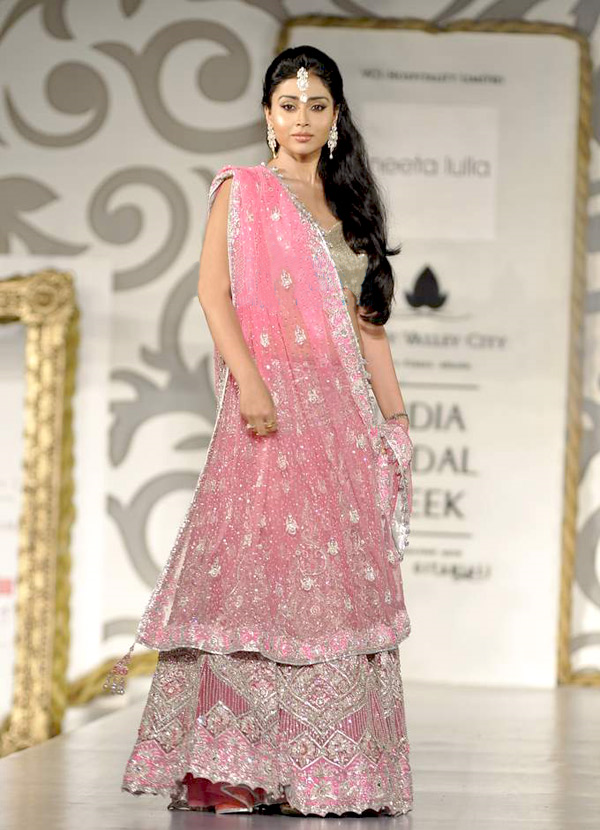The lehenga choli also called ghagra choli is a three-piece ensemble that includes a lengthy skirt, a blouse and a dupatta. It is worn by securing the skirt at the waist, wearing the blouse in a similar fashion as a saree blouse and wrapping a chuni around the neck and or waist. After the saree, the lehenga choli is one of the most recognized types of Indian attire.

Both beautiful and modest, lehenga cholis are worn by women of all ages even young girls during religious ceremonies, weddings, festivals and other celebratory occasions.
The History
Lehenga cholis first appeared on the scene in the 10th Century, predominantly in Northern India. During the Mughal reign, the lehenga took on fine craftsmanship expertise, especially in beading,
sequins and zari work which was applied to fine quality materials such as silk, velvet and georgette. Prior to this, the lehenga choli was a simple dress made out of cotton. Between the 12th and
18th centuries, many royal families adopted the lehenga style to other materials such as brocade and silk.

The Making of a Lehenga Choli
A single lehenga can take at least twenty days to make. This depends on the fabric and embellishments that are applied. Hand-woven or hand-stitched lehengas take even longer to make. The finer
the detail on the lehenga, the longer it takes to make. Many craftsmen work their magic on a single lehenga before it is sold to a customer! This is what makes the lehenga choli a true art
form.
Styles and Varieties
From its origins as a simple skirt, blouse and dupatta, the lehenga choli has undergone numerous design transformations. Currently there are over ten variations of the lehenga choli. The most
popular styles are the A-line lehenga, Mermaid or fishtail lehenga, circular lehenga and the straight cut lehenga.
Other unique variation in the traditional design of the lehenga occurred between the 18th and 19th centuries. Instead of the lower portion being a skirt, it began to resemble flared pants. For example, the Sharara comprises of a blouse, a dupatta and pants that flares out like a skirt from the knee joint. Sometimes the Sharara is worn with two dupattas, the extra one acts like a veil. Shararas are worn during weddings.

The ghagra is another design twist of the lehenga choli. The difference lies in the pleats. The lehenga is form-fitting and resembles an ‘A’ whereas the ghagra has pleats or gathers around the waist. There are many versions of the ghagra choli as well. They are worn predominantly by women in Gujarat and Rajasthan. Ghagras may be made from cotton, crepe, georgette or silk. They feature a range of embellishments from simple stitching and bead work to fancy bead and mirror work, tie-dye and Swarovski crystal encrusting.

The Lacha is another twist of the lehenga and Sharara. This attire includes a lengthy blouse that reaches the knee. The skirt is designed in the same fashion as a ghagra or lehenga.

The lehenga choli is suitable for women of all shapes and sizes. It is a must-have item in every woman’s closet.
For beautiful lehenga choli designs and styles, shop at Indian Wedding Saree.
 READIPRINT FASHIONS
READIPRINT FASHIONS